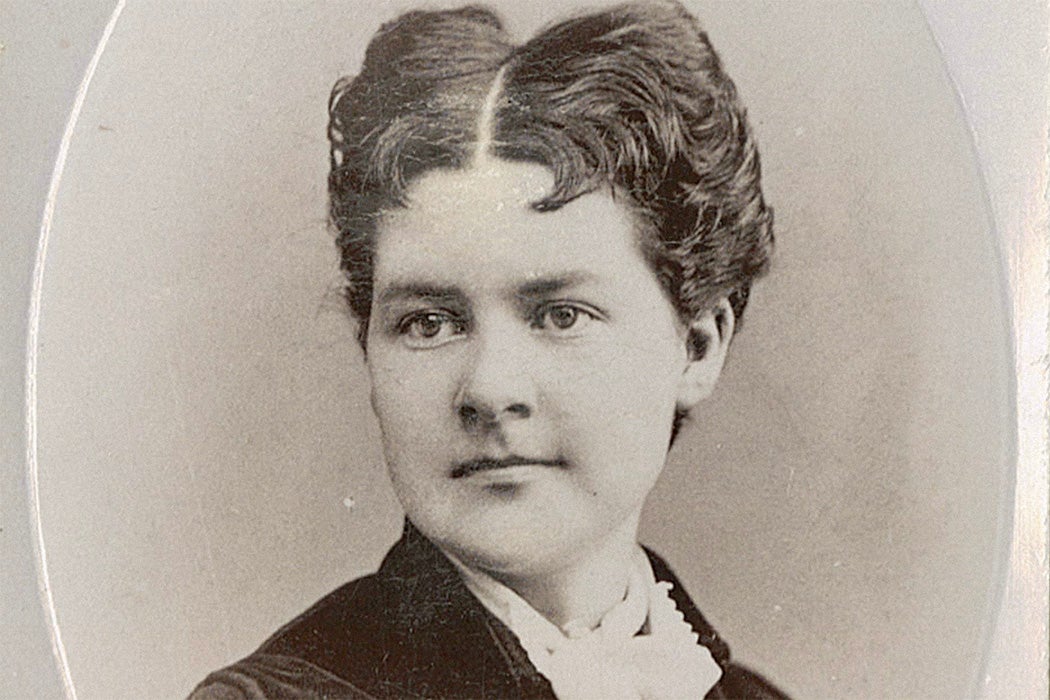Besides the curious early case of New Jersey, women in Utah Territory were the first in the U.S. to cast ballots legally, having won voting rights in early 1870. (A Wyoming Territory law had extended the franchise to approximately 1,500 white women in December 1869, but Utahns actually voted first, in Salt Lake City’s municipal elections in February 1870.)
Half a century before the ratification of the Nineteenth Amendment in 1920, as scholar Katherine Kitterman writes, Utah was home to the “first substantial population of voting women in the United States.” Yet the pioneering history of women’s suffrage in Utah has been obscured by controversies over Mormon polygamy: “Polygamy was the precipitating factor for Utah’s 1870 suffrage law, and it was the reason Congress revoked Utah women’s voting rights in 1887.”
As Kitterman notes, women in the Church of Jesus Christ of Latter-day Saints “collectively entered politics to defend their religious practice and the rights of polygamous men against congressional attack.” The “Mormon Question” roiled territorial and national politics—what would be the nature of governance in Utah?—and polygamy, or bigamy as anti-Mormons were more likely to call it, was a big part of the problem.
Antipolygamists in the territory attempted to overturn Utah women’s suffrage several times during the 1870s and 1880s. The first congressional effort to disenfranchise women in Utah was drafted by a New Jersey congressman in 1873. Antisuffragists and antipolygamists, finding common cause, were finally successful with the Edmunds-Tucker Act of 1887, a sweeping federal anti-Mormon law that, among other things, disenfranchised all women in Utah.
Polygamy was officially disavowed by the church in 1890, allowing Utah to become a state in 1896. That year the state’s constitution granted women the franchise again—this time nearly a quarter century before the Nineteenth Amendment.
The first woman to be elected to a state senate anywhere in the United States was in Utah. In the 1896 election, Martha Hughes Cannon beat several other candidates, from two parties. One of those candidates was…her husband. She had been his fourth wife when polygamy was still legal. During the 1880s, Cannon had gone into exile in Europe for two years so that she couldn’t be called as a witness against her husband in antipolygamy legal proceedings.
“The problem with dismissing women’s suffrage in Utah as an experiment or a Mormon public relations ploy is that this obscures the very real political experience Utah women gained as voters and political actors in the 1870s and 1880s,” writes Kitterman.
Weekly Newsletter
Women weren’t just voting, as Martha Hughes Cannon’s election makes clear. Kitterman notes that between statehood and the Nineteenth Amendment, “Utahns elected sixteen women to the state legislature and over 130 women to county offices.” Women in Utah showed that, as Cannon testified, “none of the unpleasant results which were predicted [by those opposed to women voting] have occurred.” Utahns also joined forces with the National American Woman Suffrage Association and the National Woman’s Party in working for women’s suffrage across the country.
Kitterman has also written about African American voting rights in Utah, where the record is “less well defined.” Asian-born immigrant women couldn’t apply for citizenship until 1952. Native American women on reservations in Utah, granted American citizenship in 1924, were prevented from voting in the state until 1957.
Support JSTOR Daily! Join our new membership program on Patreon today.







